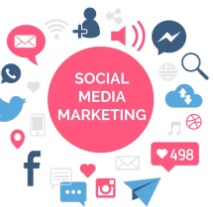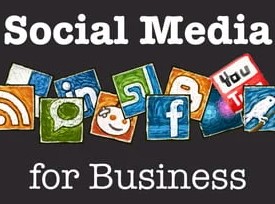Online marketing has become an essential aspect of any business looking to reach a broader audience, increase sales, and enhance its brand presence. With billions of active users on social media platforms, search engines, and various other digital channels, the opportunity for businesses to market themselves online has never been greater. However, the key to success lies in understanding and effectively utilizing the core components of online marketing. In this article, we will delve into the key components that form the foundation of a successful online marketing business, providing you with a comprehensive guide to help you navigate this complex landscape.
1. Website Development & Optimization
The backbone of your online marketing efforts is your website. Whether you are selling products, offering services, or simply looking to increase brand awareness, your website acts as the first point of contact for your potential customers. It’s crucial to ensure that your website is well-designed, user-friendly, and optimized for performance.
Key Considerations:
Responsive Design: With the increasing use of mobile devices for browsing, having a website that adapts to different screen sizes is vital. A responsive website ensures that users can easily navigate your site, regardless of the device they are using.
Page Load Speed: Slow-loading pages can cause visitors to abandon your site, leading to higher bounce rates and lower conversion rates. Tools like Google PageSpeed Insights can help you identify areas for improvement.
User Experience (UX): Good UX design ensures that users can find what they need with minimal effort. This includes intuitive navigation, clear calls-to-action (CTAs), and a logical content structure.
SEO Optimization: Your website needs to be optimized for search engines to rank higher in search engine results pages (SERPs). This involves optimizing your website’s content, meta tags, header tags, and images, among other elements.
Actionable Tip:
Invest in a professional web development team or use a user-friendly website builder platform like WordPress, Wix, or Shopify, depending on your business needs.
2. Search Engine Optimization (SEO)
Search engine optimization (SEO) is the process of improving your website’s visibility in search engine results. SEO is a long-term strategy that focuses on organic search traffic rather than paid ads. It involves several tactics that can help your website rank higher, thereby increasing your website’s visibility and attracting more traffic.
Key Elements of SEO:
Keyword Research: Identifying the keywords and phrases your target audience is searching for is the first step in SEO. Tools like Google Keyword Planner, Ahrefs, and SEMrush can help you find the most relevant keywords for your business.
On-Page SEO: This involves optimizing individual pages on your website by integrating keywords naturally into your content, titles, headings, and meta descriptions. It also includes optimizing images with alt text and using internal links.
Off-Page SEO: Building backlinks from high-quality, authoritative websites is crucial for improving your website’s domain authority. Guest blogging, influencer marketing, and content marketing can help you acquire valuable backlinks.
Local SEO: For businesses with a physical presence, local SEO is essential. This involves optimizing your website and Google My Business profile for location-based searches, ensuring that your business appears in local search results and maps.
Actionable Tip:
Create high-quality, informative content around your target keywords, and regularly update your content to stay relevant. Also, focus on building relationships with other businesses in your niche for backlink opportunities.
3. Content Marketing
Content marketing is the creation and distribution of valuable, relevant, and consistent content to attract and engage a target audience. It’s a powerful way to drive traffic to your website, build brand awareness, and establish credibility in your industry. The type of content you produce will depend on your target audience and business goals.
Types of Content:
Blog Posts: Regularly published blog posts are a great way to inform your audience about industry trends, provide solutions to common problems, and showcase your expertise. Blogs also help with SEO by targeting specific keywords and phrases.
Videos: Video content is highly engaging and has the potential to go viral. Platforms like YouTube, TikTok, and Instagram offer businesses the opportunity to connect with their audience through video tutorials, product demos, and behind-the-scenes content.
Infographics: Infographics are visually appealing and easy to digest. They are ideal for simplifying complex information and can be shared across social media platforms, increasing your reach.
Case Studies & Testimonials: Sharing real-life success stories and customer reviews can help build trust with your audience. Case studies and testimonials can also serve as social proof, showing potential customers the value you bring.
Actionable Tip:
Create a content calendar to plan and organize your content. Consistency is key, so ensure that you regularly post content that resonates with your audience.
4. Social Media Marketing
Social media platforms like Facebook, Instagram, Twitter, and LinkedIn have billions of active users. These platforms offer a direct way to engage with your audience, build brand loyalty, and promote your products or services. Social media marketing allows businesses to humanize their brand, connect with their audience on a personal level, and drive traffic to their website.
Key Social Media Strategies:
Platform Selection: Not all social media platforms are right for every business. Choose platforms that align with your target audience’s demographics and interests. For instance, Instagram is great for visual content, while LinkedIn is ideal for B2B businesses.
Content Creation & Sharing: Share a mix of content types, such as images, videos, stories, and user-generated content. Ensure that your posts are aligned with your brand’s voice and message.
Engagement: Respond to comments, messages, and mentions promptly. Engaging with your followers will help foster a loyal community and increase brand awareness.
Paid Advertising: Social media platforms offer advanced targeting options for paid ads. With tools like Facebook Ads and Instagram Ads, you can target users based on interests, location, behavior, and more.
Actionable Tip:
Leverage the power of social media influencers in your industry. Collaborating with influencers can give your brand access to their audience, boosting visibility and trust.
5. Email Marketing
Email marketing remains one of the most effective channels for nurturing leads and converting them into customers. With email marketing, businesses can send personalized messages directly to subscribers’ inboxes, promoting products, services, or special offers.
Key Elements of Email Marketing:
Email List Building: Build a high-quality email list by offering valuable incentives, such as discounts, free eBooks, or exclusive content. You can capture email addresses through website forms, pop-ups, and landing pages.
Segmentation: Segment your email list based on demographics, purchase history, or engagement level. Personalized emails are more likely to convert than generic ones.
Automation: Set up automated email sequences to welcome new subscribers, follow up on abandoned carts, or send regular newsletters. Tools like Mailchimp and ConvertKit make email automation easy to implement.
A/B Testing: Continuously test different subject lines, content, and CTAs to optimize your email campaigns for higher open rates and conversions.
Actionable Tip:
Make sure your emails are mobile-friendly. A large portion of emails is opened on mobile devices, so it’s essential that your emails are responsive.
6. Paid Advertising (PPC)
While organic methods like SEO and content marketing take time, paid advertising offers businesses the ability to generate immediate traffic and conversions. Pay-per-click (PPC) advertising allows businesses to bid for ad space on search engines, social media platforms, and other websites.
Types of Paid Advertising:
Google Ads: Google’s search and display ads allow businesses to appear at the top of search results for relevant keywords. Google Ads also offers display network advertising, which places your ads on other websites across the web.
Social Media Ads: Platforms like Facebook, Instagram, and LinkedIn offer robust advertising solutions that allow businesses to target users based on interests, behaviors, and demographics.
Retargeting Ads: Retargeting allows you to show ads to users who have previously visited your website or engaged with your brand. This is a highly effective way to remind potential customers of your products or services.
Actionable Tip:
Set a clear advertising budget and track your ROI (Return on Investment) to ensure that your paid campaigns are profitable.
7. Analytics & Reporting
The final piece of the puzzle is measuring the performance of your online marketing efforts. Analytics and reporting allow you to track key metrics such as traffic, conversions, engagement, and revenue. By analyzing this data, you can make informed decisions, optimize your campaigns, and improve overall performance.
Key Analytics Tools:
Google Analytics: Google Analytics provides detailed insights into website traffic, user behavior, and conversion rates. It also offers eCommerce tracking, allowing you to monitor sales and revenue.
Social Media Insights: Platforms like Facebook, Instagram, and Twitter provide in-depth analytics on engagement, reach, and demographics. Use these insights to improve your social media strategy.
Email Marketing Metrics: Tools like Mailchimp and ConvertKit offer detailed metrics on open rates, click-through rates (CTR), and conversions. Regularly analyze these metrics to refine your email campaigns.
Actionable Tip:
Set specific KPIs (Key Performance Indicators) for your online marketing campaigns. Continuously monitor these metrics to ensure your marketing efforts are on track.
Building a successful online marketing business requires a combination of multiple strategies and components. From developing a user-friendly website and optimizing for SEO to utilizing social media, email marketing, and paid advertising, each component plays a crucial role in driving traffic, engagement, and conversions. By focusing on these key elements and continuously measuring your efforts, you can stay ahead of the competition and achieve long-term success in the digital world.




